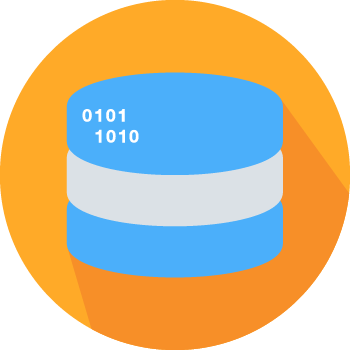10 Reasons for Digital Asset Management

01 Manage centrally and share digital content
Using a DAM system, all your digital media assets are stored and managed centrally in one convenient location. This centralized approach allows you to access and work with your assets from anywhere, whether you’re in the office, at home, or on the go. With a DAM, gone are the days of searching through various systems and folders to find the right files. You’ll save valuable time and effort by having all your media easily accessible in one place. Furthermore, a DAM system provides the flexibility to share your digital content with others. Instead of sending large files via email or using external file-sharing platforms, you can simply share a link to the asset stored in the DAM. This streamlines collaboration and makes it effortless to work with colleagues, clients, and partners, regardless of their location.

02 Search and locate keywords and tags
Efficient organization and categorization of your media assets are crucial for quick and easy retrieval. With a DAM system, you can assign keywords and tags to your assets, making it simple to search and locate specific files. By adding descriptive metadata, such as title, description, and relevant keywords, you can create a comprehensive taxonomy that enables precise searching. Some DAM systems even offer automatic tagging capabilities, leveraging artificial intelligence and machine learning algorithms to analyze the content and automatically assign relevant tags. This saves you time and ensures consistent and accurate tagging across your media library.

03 Format conversion made easy!
In today’s digital landscape, media assets need to be available in various formats to accommodate different platforms, devices, and user preferences. Converting files manually can be time-consuming and resource-intensive. However, with a DAM system, format conversion becomes a breeze. You can easily convert images, videos, audio clips, and documents into the required formats directly within the DAM interface. The original files remain untouched, ensuring their integrity and allowing for future modifications if needed. By having the ability to convert assets on the fly, you can optimize loading times, enhance user experience, and reduce the need for redundant storage of multiple file versions.

04 Save storage place and avoid multiple purchases
One of the common challenges in managing digital media is the proliferation of duplicate files. This not only wastes valuable storage space but can also lead to confusion and inefficiency. A DAM system helps you overcome this challenge by providing robust duplicate detection and management features. When you upload new assets, the DAM automatically checks for duplicates based on file names, file sizes, or even visual similarity. This prevents redundant content from cluttering your media library and ensures that you make the most efficient use of your storage space. Moreover, by eliminating unnecessary duplication, you can avoid repurchasing assets that you already own, saving costs and preventing unnecessary license violations.

05 Work collaboratively in a DAM for efficient workflows
Collaboration lies at the heart of successful projects and teams. With a DAM system, you can foster efficient and streamlined workflows by enabling seamless collaboration among team members and stakeholders. A DAM provides features like version control, annotations, comments, and task assignment, allowing team members to work together on projects, provide feedback, and track progress. Furthermore, some DAM systems integrate with collaboration tools, such as project management platforms or communication channels, making it even easier to coordinate and manage tasks within the context of your media assets. Whether you’re working with an in-house team or external partners, a DAM system enhances collaboration, promotes efficient workflows, and ultimately improves project outcomes.

06 Take control of your image licenses and rights
Managing image licenses and usage rights is crucial for compliance with copyright laws and ensuring that your company operates ethically. A DAM system provides comprehensive rights management functionality that enables you to keep track of the licenses and permissions associated with your media assets. You can assign usage rights to specific assets, track when and where they are used, and set expiration dates for licenses. Additionally, some DAM systems integrate with external databases that provide information about image licenses and copyright restrictions, helping you make informed decisions about using specific assets. By maintaining control over your image licenses and rights within a DAM system, you can mitigate legal risks and ensure responsible and ethical usage of your media assets.

07 Connect with ease to existing systems via REST API
In today’s interconnected digital ecosystem, it’s essential for software systems to seamlessly integrate and communicate with each other. A DAM system offers integration capabilities through REST APIs, allowing you to connect and exchange data with your existing systems. Whether you have a Product Information Management (PIM) system, a Customer Relationship Management (CRM) platform, an Enterprise Resource Planning (ERP) software, or a Content Management System (CMS), a DAM can integrate with these systems and provide a unified media management experience. By leveraging REST APIs, you can streamline your workflows, eliminate duplicate data entry, and ensure data consistency across different platforms. Furthermore, you can enhance your creative workflows by linking popular applications like Adobe Creative Cloud or Microsoft Office directly to your DAM, simplifying asset access and enhancing productivity.

08 Scale as needed
As your business grows, so does your need for scalable solutions. A cloud-based DAM system offers the flexibility to scale your resources according to your evolving requirements. Whether you need additional storage space for your expanding media library or an increased number of user licenses to accommodate a growing team, a cloud-based DAM can adapt to your needs. The underlying infrastructure is designed to handle increasing demands, ensuring that your system remains accessible and performs optimally even during peak usage. This scalability eliminates the need for upfront hardware investments and provides a cost-effective solution that aligns with your business growth.

09 User Management – manage user rights with ease
Effective user management is essential for maintaining security and controlling access to sensitive data within your DAM system. A DAM provides robust user management features that allow you to create user accounts, assign roles and permissions, and manage user groups. By assigning appropriate access rights to different user roles (such as administrators, project managers, team members, or guests), you can ensure that only authorized individuals have access to specific assets or functionalities. User groups can be created to streamline access management and facilitate collaboration within defined teams or departments. With granular control over user rights, you can maintain data security and protect your valuable media assets from unauthorized access.

10 A DAM system offers greater security
Security is a top priority when it comes to managing and safeguarding your digital assets. A DAM system provides robust security measures to protect your media assets from unauthorized access, data breaches, and loss. These measures include user authentication, role-based access control, encryption of data during transmission, and secure storage of assets on dedicated servers or in the cloud. Regular data backups ensure that your assets are protected against accidental loss or system failures. With a DAM system, you can have peace of mind knowing that your valuable media assets are stored securely and that your organization’s data is protected.
Unlocking the Power of Digital Asset Management: 10 Compelling Reasons to Implement DAM
In summary, implementing a DAM system brings numerous benefits to managing your digital media assets. It allows you to store and manage your assets centrally, making them easily accessible from anywhere. You can share content with others effortlessly, streamlining collaboration. Efficient organization and tagging enable quick and precise searching of files. Format conversion within the DAM system simplifies adapting assets to different platforms. Duplicate detection and management save storage space and prevent unnecessary purchases. Collaboration features enhance workflows and project outcomes. Rights management ensures compliance and responsible asset usage. Integration capabilities through REST APIs enable seamless connectivity with existing systems. Cloud-based DAM systems offer scalability to accommodate growing needs. User management features maintain data security and control access. Robust security measures protect assets from unauthorized access and data breaches.
In conclusion, a DAM system provides a comprehensive solution for effectively managing and maximizing the value of your digital media assets. It streamlines workflows, enhances collaboration, ensures compliance, and safeguards your valuable assets, ultimately improving efficiency and productivity within your organization.
